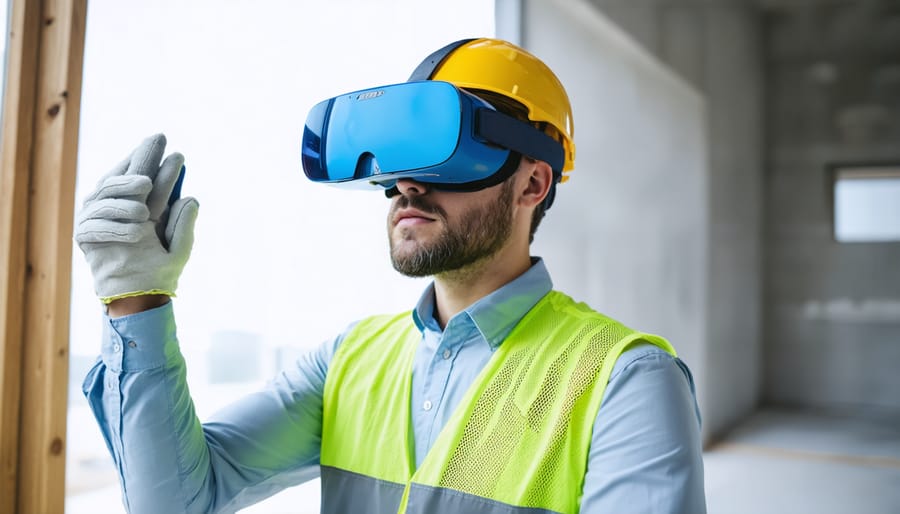Empower employees to innovate by establishing a supportive culture that encourages risk-taking, experimentation, and continuous learning. Leverage advanced construction data analytics to identify inefficiencies and uncover opportunities for process improvements. Foster cross-functional collaboration through dedicated innovation teams and regular ideation sessions that bring together diverse perspectives. Partner with startups, research institutions, and industry leaders to tap into external expertise and stay at the forefront of emerging technologies and methodologies.
Embrace a Culture of Experimentation
Host Regular Innovation Challenges
Hosting regular innovation challenges is an effective way to encourage creative problem-solving and foster a culture of innovation within your construction firm. These competitions should focus on specific, real-world issues facing your projects or the industry at large. Define clear objectives, parameters, and evaluation criteria for each challenge. Encourage cross-functional teams to participate, bringing together diverse perspectives from across the organization. Consider involving external partners, such as suppliers, clients, or even students, to bring fresh ideas to the table. Offer meaningful rewards and recognition for the most innovative solutions, and ensure that winning ideas are implemented and celebrated. By making innovation challenges a regular occurrence, you can keep the spirit of creativity and continuous improvement alive in your firm, driving tangible results and setting your company apart in the competitive construction landscape.
Celebrate Lessons from Failed Attempts
Embracing lessons from failed attempts is crucial for fostering a culture of innovation. Rather than stigmatizing failure, celebrate the valuable insights gained from unsuccessful ideas. Encourage team members to share their experiences openly, highlighting what they learned and how it can inform future projects. By reframing failure as an opportunity for growth, you create a psychologically safe environment where people feel empowered to take calculated risks. Regularly showcase “failure case studies” to normalize the iterative nature of innovation and emphasize the importance of continuous improvement. Recognize and reward individuals who demonstrate resilience and adaptability in the face of setbacks. By destigmatizing failure and celebrating the lessons learned, you cultivate a mindset that embraces experimentation and drives breakthrough thinking in the construction industry.
Break Down Silos
Form Diverse Project Teams
Assembling project teams with diverse skill sets and backgrounds is crucial for fostering innovation in construction. Seek out individuals from various disciplines, such as design, engineering, construction management, and technology, to contribute their unique perspectives and expertise. Encourage collaboration between seasoned professionals and fresh talent to blend experience with new ideas. Consider including team members from outside the construction industry who can offer valuable insights and challenge traditional thinking. Promote a culture of open communication and respect, where all team members feel empowered to share their ideas and opinions. By bringing together a mix of skills, experiences, and viewpoints, you create a fertile ground for innovative solutions to emerge and take root in your construction projects.

Create Collaborative Workspaces
To encourage spontaneous interaction and collaboration, intentionally design workspaces that facilitate chance encounters. Replace traditional closed offices with open floor plans featuring communal areas like lounges, cafes, and brainstorming rooms. Strategically place essential amenities like coffee stations and printers in central hubs to draw people from different departments together. Incorporate flexible, modular furniture that can be easily reconfigured for impromptu meetings or project collaboration. Consider adding whiteboards, writable walls, and other surfaces that invite sharing ideas on the spot. Well-designed collaborative spaces not only stimulate creativity but also break down silos between teams. By fostering a sense of community and serendipitous interactions, these environments set the stage for innovative thinking and problem-solving across the organization.
Invest in Cutting-Edge Technology
Adopt BIM Software
Implementing Building Information Modeling (BIM) software can revolutionize collaboration and problem-solving in construction projects. By creating a shared digital representation of a building, BIM enables teams to work together more efficiently and identify potential issues early on. According to a case study by Autodesk, a leading BIM software provider, projects using BIM have seen up to 50% reduction in change orders and 30% shorter project lifecycles. BIM allows architects, engineers, and contractors to coordinate their efforts seamlessly, minimizing errors and rework. It also facilitates real-time collaboration, enabling teams to make informed decisions quickly. Moreover, BIM’s 3D visualization capabilities help stakeholders better understand complex designs and catch potential clashes before construction begins. By adopting BIM, construction firms can foster a culture of innovation, improve communication, and deliver projects more efficiently. Learn more about how 3D BIM Modeling is revolutionizing construction.

Experiment with AR/VR
Augmented and virtual reality (AR/VR) technologies offer immense potential for innovation in the construction industry. By creating immersive digital environments, AR/VR enables designers, engineers, and clients to visualize and interact with projects in a more intuitive and engaging way. Virtual walkthroughs allow stakeholders to experience spaces before they are built, facilitating better communication and decision-making. AR overlays can provide real-time data and guidance to field workers, enhancing efficiency and accuracy. Beyond design, AR/VR can revolutionize training by simulating realistic job site scenarios, allowing workers to practice tasks and safety protocols in a controlled setting. Collaborating with industry groups focused on AR/VR can help firms stay at the forefront of these technologies. As AR/VR continues to advance, forward-thinking construction companies that embrace these tools will be well-positioned to drive innovation, improve project outcomes, and gain a competitive edge in the market.
Implement Jobsite Sensors and Drones
Jobsite sensors and drones provide real-time data that can revolutionize construction processes and enhance safety. By deploying advanced sensors, companies can monitor key metrics such as equipment performance, material usage, and environmental conditions. This data enables proactive maintenance, optimized resource allocation, and improved decision-making. Additionally, drones equipped with high-resolution cameras and sensors can conduct site surveys, inspect hard-to-reach areas, and monitor progress. The insights gained from these technologies help identify potential issues early, reduce downtime, and ensure compliance with jobsite safety regulations. Embracing jobsite sensors and drones fosters a culture of innovation, empowering teams to work smarter and deliver projects more efficiently.
Foster External Partnerships
Engage with Construction Tech Startups
Collaborating with construction tech startups can provide a valuable pipeline of emerging solutions to pilot and potentially implement at scale. These agile young companies are at the forefront of developing innovative tools and platforms to tackle key industry challenges like productivity, safety, sustainability, and more.
By engaging with startups, construction firms can gain early access to cutting-edge technologies, from AI-powered project management software to advanced robotics and automation. Piloting these solutions on real projects allows for hands-on evaluation of their impact and ROI. Successful pilots can lead to wider adoption, giving firms a competitive edge.
Additionally, partnering with startups can inspire a culture of innovation internally. Exposure to entrepreneurial thinking and new ways of working encourages employees to challenge the status quo and propose process improvements. Construction giants like AECOM and Thornton Tomasetti have launched accelerator programs to nurture promising startups and create a pipeline of potential sustainability careers and solutions to integrate.
Sponsor University Research
Investing in university research is a powerful way for construction firms to stay at the forefront of innovation. By funding studies on cutting-edge techniques and materials, companies can gain early access to game-changing breakthroughs that revolutionize project efficiency, safety, and sustainability. Collaborating with academic institutions allows firms to tap into the expertise of leading researchers and gain insights into emerging trends. These partnerships can yield new solutions for challenges like energy efficiency, modular construction, and advanced robotics. Sponsored research also provides valuable opportunities for field testing and refinement before widespread adoption. Construction firms that proactively support university research position themselves as industry leaders, attract top talent, and secure a competitive edge in a rapidly evolving market. Investing in innovation through academic partnerships is a strategic move that can pay significant dividends in terms of project success, client satisfaction, and long-term growth.

Develop an Innovation-Focused Talent Strategy
Recruit Diverse Skill Sets
To drive innovation, consider recruiting talent from diverse industries and backgrounds. Fresh perspectives from outside the construction sector can spark creative thinking and problem-solving. For example, hiring a product designer could bring new insights into prefabrication and modular construction techniques. A software engineer might introduce cutting-edge construction technology solutions to streamline processes. Professionals from manufacturing, logistics, or even healthcare could offer valuable cross-industry knowledge to optimize operations and improve safety. By assembling a multidisciplinary team with varied skill sets, construction firms can break out of traditional silos and foster a culture of continuous improvement. Diverse collaborators challenge assumptions, ask novel questions, and adapt proven strategies from other fields to innovate in the built environment.
Provide Innovation Training
To cultivate a culture of innovation, construction firms should provide employees with training in creative problem-solving and design thinking. Workshops led by experienced facilitators can teach techniques like brainstorming, mind mapping, and rapid prototyping. These sessions encourage participants to approach challenges from new angles and generate unconventional solutions. By learning to embrace curiosity, experimentation, and iteration, employees develop the skills to drive innovation in their daily work. Firms can also offer training on specific tools and methodologies, such as Lean Construction or Building Information Modeling (BIM), which promote efficiency and collaboration. Regular innovation workshops not only build capabilities but also send a strong signal that the company values creative thinking and continuous improvement. Over time, this investment in employee development helps foster a culture where innovation thrives.
Fostering a culture of innovation in the workplace is a critical factor in driving growth, staying competitive, and attracting top talent in the construction industry. By implementing strategies such as encouraging collaboration, investing in technology, forming strategic partnerships, and nurturing a diverse workforce, companies can unlock new opportunities and stay ahead of the curve. However, building an innovation-driven organization requires more than just lip service – it demands a genuine commitment from leadership, a willingness to take calculated risks, and a relentless focus on continuous improvement.
As a construction industry leader, taking action to prioritize innovation within your firm is essential. Start by assessing your current culture and identifying areas for improvement. Engage your team in open discussions about how to foster creativity and collaboration. Invest in training and development programs that equip your employees with the skills and knowledge needed to drive innovation forward. And most importantly, lead by example – demonstrate your own commitment to trying new things, learning from failures, and always striving to push the boundaries of what’s possible in our industry. With dedication and perseverance, you can build a workplace where innovation thrives – and reap the rewards for years to come.

